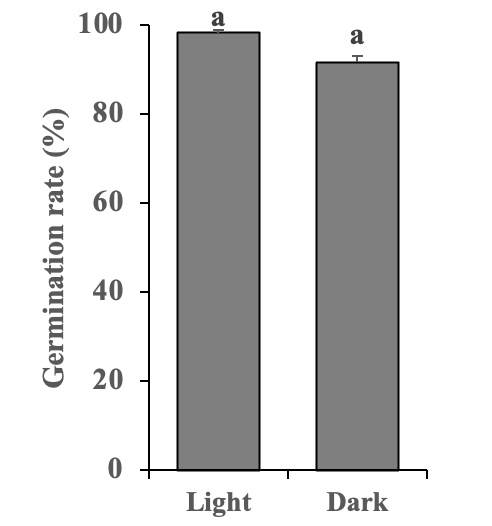Abstract
Exotic weeds are considered as one of the major threats for agro-ecosystem and global food security. Hence, herbicides selection and application doses are considered of great importance for sustainable weed management practice and optimum crop production. Since,
Figures & Tables

Fig. 1.Germination rate of under light and dark condition. a: Different letter above the bar represents significant difference at P<0.05.


